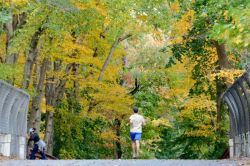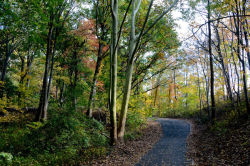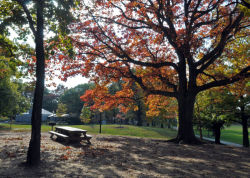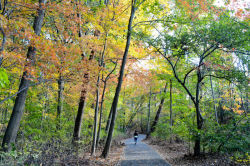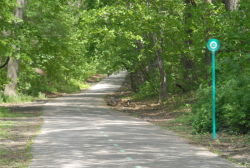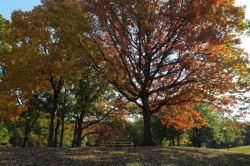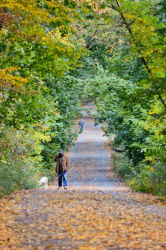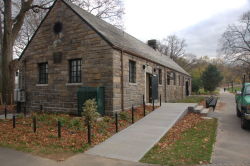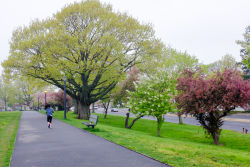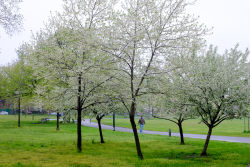Cunningham Park
Long Island Motor Parkway
What was here before?
Railroad mogul and financier William ‘Willie’ K. Vanderbilt II (1878-1944) began construction on the road on June 6, 1908. It was the first long-distance, reinforced concrete highway, using bridges and overpasses to eliminate cross traffic and curves for safety and speed.
Vanderbilt, great-grandson of the noted railroad developer Cornelius Vanderbilt (1794-1877), became a serious devotee of a brand-new mode of high-velocity transportation: the automobile. Having participated in the Grand Prix cross-country races in Europe, ‘Willie K’ tried to create a similar long-distance road race in Long Island.
Vanderbilt initially held his races on 25-mile routes, mostly over Nassau County local roads. In 1906, after a car crash killed a spectator, Vanderbilt decided to remove the races from public roads and build a private, landscaped parkway. Running from eastern Queens to Lake Ronkonkoma, his road was also ideal for pleasure driving. Two-dollar tolls were charged at twelve “toll lodges” designed by John Russell Pope (1874-1937), the New York architect who later designed the Jefferson Memorial. One of these toll lodges is currently being used as the Chamber of Commerce for Garden City, Long Island.
The first section of the road was finished in time for the popular 1908 Vanderbilt Cup Race, and the races continued there until 1910, when three spectators were killed and twenty others injured.
In 1912, the parkway was fully opened to the public as a private toll road for its entire 45-mile length. It was used primarily by New York City’s elite, travelling to and from their Long Island estates. With the onset of Prohibition in 1920, the parkway acquired the nickname ‘Rumrunner’s Road’ because bootleggers often used it to avoid the police.
How did this site become a parkway?
In 1929, Robert Moses (1888-1981), then president of the Long Island State Park Commission, began planning for the construction of the Northern State Parkway through Nassau County. Vanderbilt offered to sell his parkway to Moses, who considered the road too antiquated. Vanderbilt reduced the toll to forty cents to remain competitive, but by 1937 the parkway was no longer solvent. It shut down in 1938, and was deeded over to the counties through which it ran. Within three months, Moses transformed the Queens section of the parkway into the “Queens Bicycle Path”.
Parkways were the prototype for today’s superhighways. Vanderbilt’s parkway originally had 65 bridges and underpasses, and though few survive, in 1998 five bridges were reconstructed between 73rd Avenue and Springfield Boulevard. Those bridges and the road itself reflect state-of-the-art roadway technology of the early 20th century. Some of the original roadway material was a patented form of reinforced concrete, a technological leap forward from previous roads surfaced with materials like wood planks, oyster shells, or oiled dirt. NYC Parks later repaved the road with additional asphalt, but portions of the original surface, along with original markers and fence posts, can still be seen.
In 1986, NYC Parks rehabilitated the section of the parkway through Alley Pond and Cunningham Park. In 1993 it was incorporated into the Brooklyn-Queens Greenway, itself part of the wider New York City Greenway Program.
In 2002, due to the efforts of the Friends of Cunningham Park, a section of the Long Island Motor Parkway, located in present-day Cunningham and Alley Pond Parks in eastern Queens, was placed on the New York State and National Registers of Historic Places. This section amounts to approximately 2.5 miles of roadway. Efforts are also underway to preserve other sections of the parkway.
The Long Island Motor Parkway, also known as the Vanderbilt Motor Parkway, survives today as a bicycle path, but began as America’s first limited-access road for cars.
Check out your park's Vital Signs
Clean & Safe
Green & Resilient
Empowered & Engaged Users
Share your feedback or learn more about how this park is part of a
Vital Park System
Contacts
Cunningham Park: (718) 217-6452

